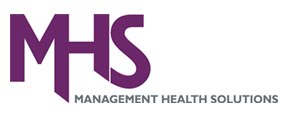When the Centers for Medicare & Medicaid Servicdes
announced a one-year delay for ICD-10 implementation in February 2012 – pushing
the date back to Oct. 1, 2014 – some industry groups cheered, others jeered.
What did CFOs do? The smart ones kept their focus and pushed forward with their
implementation plans and schedules.
The trouble is there may not be enough smart ones.
“We’re seeing a lot of (CFOs) put their head in the sand,”
said Mike Koehler, a director in the risk practice of solutions firm Crowe
Horwath. “We’re seeing tremendous failure on an organizational level.”
According to Koehler, it’s imperative for healthcare
provider organizations to have a steering committee and for that steering
committee to keep the CFO and senior executives focused on ICD-10.
“We are telling clients they need to have the five pillars,”
he said, referring to a committee that is comprised of an executive leader and
a representative from the revenue cycle, from the clinical side, from IT and
from coding/quality control.
“You have got to have a steering committee,” he emphasized.
Dawn Duchek, industry initiatives coordinator at medical
clearinghouse Gateway EDI, agrees.
“One way to keep leadership focused on ICD-10 is to
establish a steering committee made up of key stakeholders from each area of
the practice,” she said. “This committee can report to executives on impacts,
risks and costs associated with ICD-10 implementation, and play a lead role in
helping each area of the practice with its integration needs.”
Duchek suggests a timeframe reality check for organizations
that have taken their eyes off the ball.
“To help focus your leadership on ICD-10 preparation,
consider sharing this information: It’s been six months since the announcement
of the proposal for a year-long delay to the compliance deadline,” she said.
“If your practice has put your ICD-10 implementation on hold, you’ve already
lost six months of crucial preparation time.”
Holly Louie, chair of the Healthcare Billing &
Management Association’s ICD-10/5010 committee believes it is incumbent upon
the smart CFO to keep moving forward with their ICD-10 plans.
“The fact is, if you are accountable for the funding or
operational implementation, the ball is in your court. Slowing or stopping
transition efforts is short sighted and could be a fatal error,” she said.
“If you were sure you would be ready by October 2013, you
are in a great position. Don’t slow down or divert resources; move ahead with
completing that process and plan for mitigation,” she added. “If you are behind
the curve or not out of the gate, the extra time gives you a rare opportunity
to position for success.”
Koehler and Duchek both believe an insightful CFO can use
the ICD-10 implementation process to improve their organizations.
“The CFO, if he or she is shrewd, is going to sit back and
try to figure out how they can turn ICD-10 into a big win,” said Koehler. “They
are going to have a better relationship with payers. They should improve their
relationship with physicians. And they can also change some of the operational
gotchas.”
“As you’re identifying ways to prepare for your ICD-10
implementation, take the opportunity to note other processes that could be
improved to save time and resources,” recommended Duchek. “Your practice should
begin making those process changes now, so you are working at your most
efficient level possible before ICD-10 hits.”
For those providers that don’t stay focused on developing a
solid plan for ICD-10, Koehler offers a doomsday prediction.
“We’ve talked to a lot of CFOs who are now saying ‘this is
complicated. This is a huge operational change. This is a house-wide
initiative,’” said Koehler. “What’s going to happen is the ones who were asleep
at the switch are going to have this pass them by. We see some institutions
that are not going to be around. They are just not going to have the
wherewithal.”
